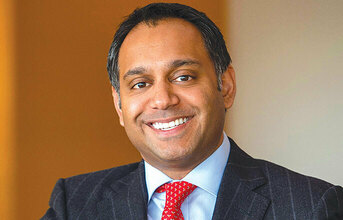
The Indian economy has achieved a remarkable growth over the past three decades. Accounting for 90 per cent of South Asia's total economic output, it was among the world-leading growth economies in the years before the pandemic. Over the past year, even while recovering from the impact of COVID-19, India's gross domestic product grew by almost 7 per cent to make it the fifth largest economy in the world. According to the International Monetary Fund's 2023 World Economic Outlook, the country's economy is projected to grow at a 5.6 per cent compound annual growth rate (CAGR) through 2041.
India's booming aerospace industry, particularly civil aviation, has been a significant factor in this success. As the world's third-largest civil aviation market, India's fleet is set to nearly quadruple in size by 2041 compared to 2019. The country is also projected to receive over 90 per cent of South Asia's airplane deliveries, requiring about 2,400 new aircraft, while its cargo market is set to expand significantly, with the fleet growing from 15 to 80 airplanes by 2042, driving a $135 billion demand for commercial services.
Enduring friendship
As a company with over eight decades in India, Boeing has long supported the development of the country's aerospace and defence capabilities. The relationship began with delivery of a T-6 Texan and a C-47 Skytrain to the Indian Air Force in the 1940s. It has expanded to today's range of active Boeing platforms including passenger airplanes, C-17 airlifters, AH-64 attack helicopters, CH-47 multimission rotorcraft, P-8I maritime patrol aircraft, and VIP transports.
Boeing's contributions to India are not limited only to products and services. The company has continuously invested in and collaborated with Indian initiatives and organisations across manufacturing, skill development, engineering services, research and technology, infrastructure, safety, and sustainability. Boeing supports India's drive to build capability and capacity for indigenous players to become an integral part of the global defence and aerospace industry.
Our long-term commitment is to India and the Aatmanirbhar Bharat vision, to the Make in India goal of increasing in-country manufacturing, and the Skill India program to build the local talent pool.
Dedication to local manufacturing and infrastructure
Boeing's support to India's sustainable growth begins with its local employees and infrastructure. Boeing India employs over 6,000 employees directly, and more than 13,000 are employed by its supplier partners in India.
We lead among foreign OEMs with over $1 billion in annual manufacturing and services sourced from 300+ Indian supplier partners. Notably, 25 per cent of these partners are Micro, Small, and Medium Enterprises (MSMEs) integral to our global supply chain
Boeing's joint venture with Tata Advanced Systems Ltd., Tata Boeing Aerospace Ltd. (TBAL) in Hyderabad, is a state-of-the-art facility that showcases Boeing's commitment to Make in India and Aatmanirbhar Bharat. TBAL manufactures aerostructures for the Boeing AH-64 Apache helicopter, including fuselages, secondary structures, and vertical spar boxes for customers worldwide, including the U.S. Army, and the six on order with the Indian Army. In 2022, Boeing added a new production line at TBAL to manufacture complex vertical fin structures for the 737-airplane family.
In 2021, Boeing launched the Boeing India Repair Development and Sustainment (BIRDS) program in its effort to help India develop into a regional MRO hub. BIRDS aims to enable engineering, maintenance, skilling, repair and sustainment services of defence and commercial aircraft in India, for India. Under this program, Boeing has signed strategic partnerships with leading indigenous players. The hub also includes training programs to increase the skilled labour pool.
Continue Reading on Page 2


























